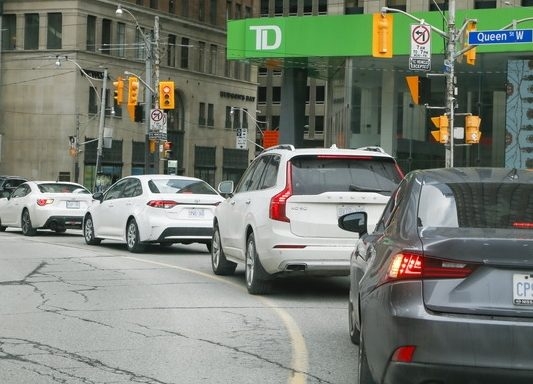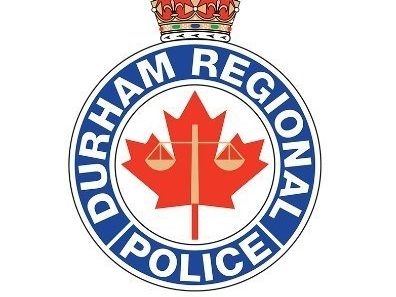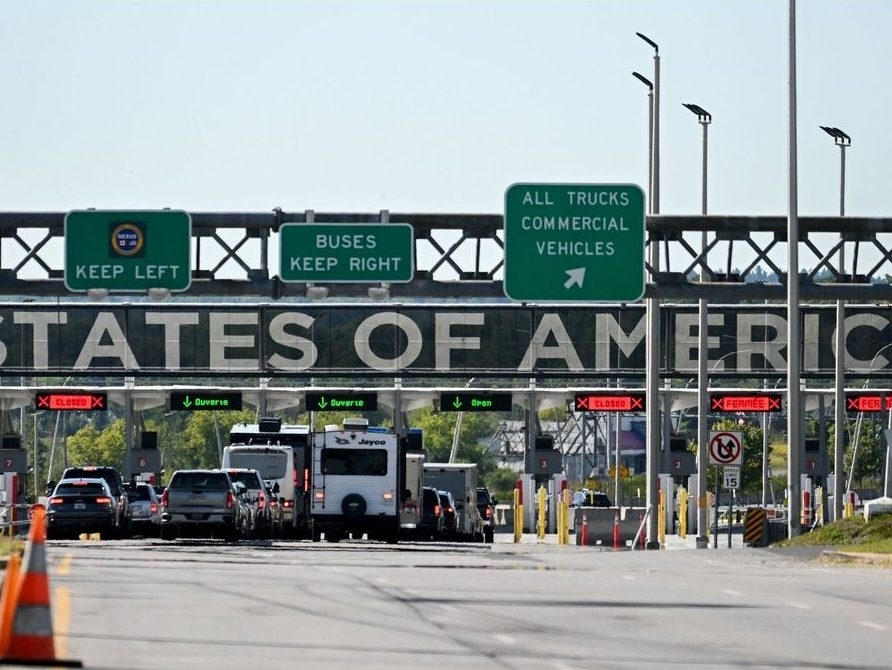
Toronto Police are increasing traffic enforcement in downtown Toronto to reduce congestion for the next three months.
Typically, these enforcement blitzes are two weeks only.
“Three months is what’s different,” said Sgt. Brett Moore of Toronto Police Traffic Services.
“The reason why we’re doing that is to really set a tone. You don’t have to be an experienced traffic cop to know that there’s a congestion challenge in the city of Toronto — it’s in the news every day. What we’re doing during these three months is we’re teaming up parking enforcement with our motor-squad officers and our police officers in the downtown core. And so essentially we’re doubling the presence in the downtown core over the three months.”
This enforcement will target congestion-causing violations like no stopping, no parking, and blocking the box offences.
In addition, officers will focus on prohibited turns, speeding, distracted driving, and traffic signal violations.
“Now we can really focus on prohibited turns, blocking the box (intersections), distracted driving, things like that,” Moore said.
“One driver can take out an entire lane of traffic because they’ve gotten stranded in the middle of an intersection. And then a whole light cycle goes through where people can’t move. Blood pressure goes up. Frustration goes up. And then the other big one we see all the time is cell phones. We constantly hear from drivers (about people) on their phone, head down, not paying attention.”
ROUTES OF ENFORCEMENT
This increased enforcement will take place from Bloor St. to Front St., and Bathurst St. to Jarvis St. from 3 p.m. to 7 p.m.
Officers will lay tickets where needed and vehicles can be towed if necessary.
The bottom line is if a driver chooses not to obey any of these laws, they can face heavy ticket fines.
Stopping along rush-hour routes is $300 ticket and a possible tow, blocking the block is over $500 and distracted driving is $615.
“The biggest sources of frustrations are the selfishness we see where drivers stop, pull over, take out a whole lane of traffic in one of our rush hour routes,” Moore said. “The four way hazards go on, pulled over to the right side of the curb, and it’s like some magic power that they have to (say) ‘I’ve just got to grab something,’ and that’s the selfishness that we’re talking about.”
The campaign’s results will be reviewed at the end of the three-month period to assess its impact and determine what’s next with a possibility of extending the blitz.





